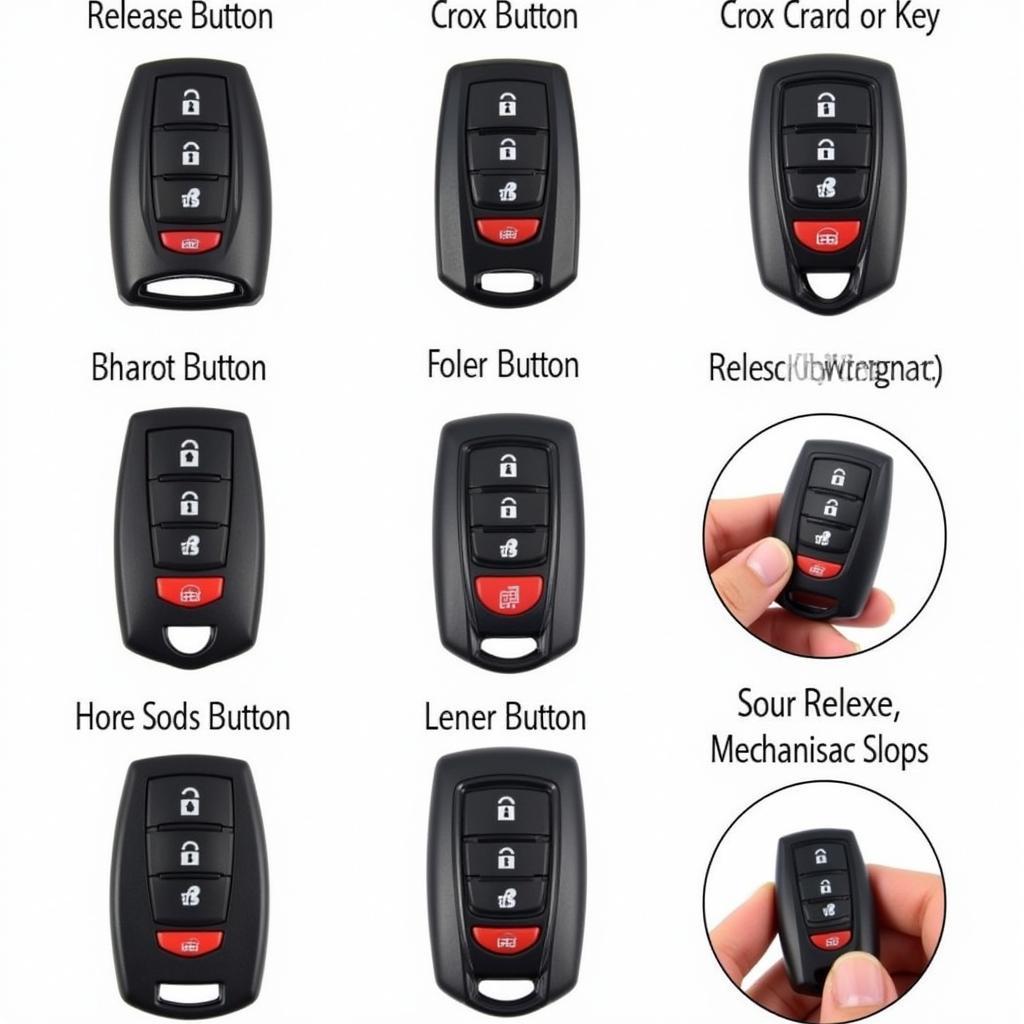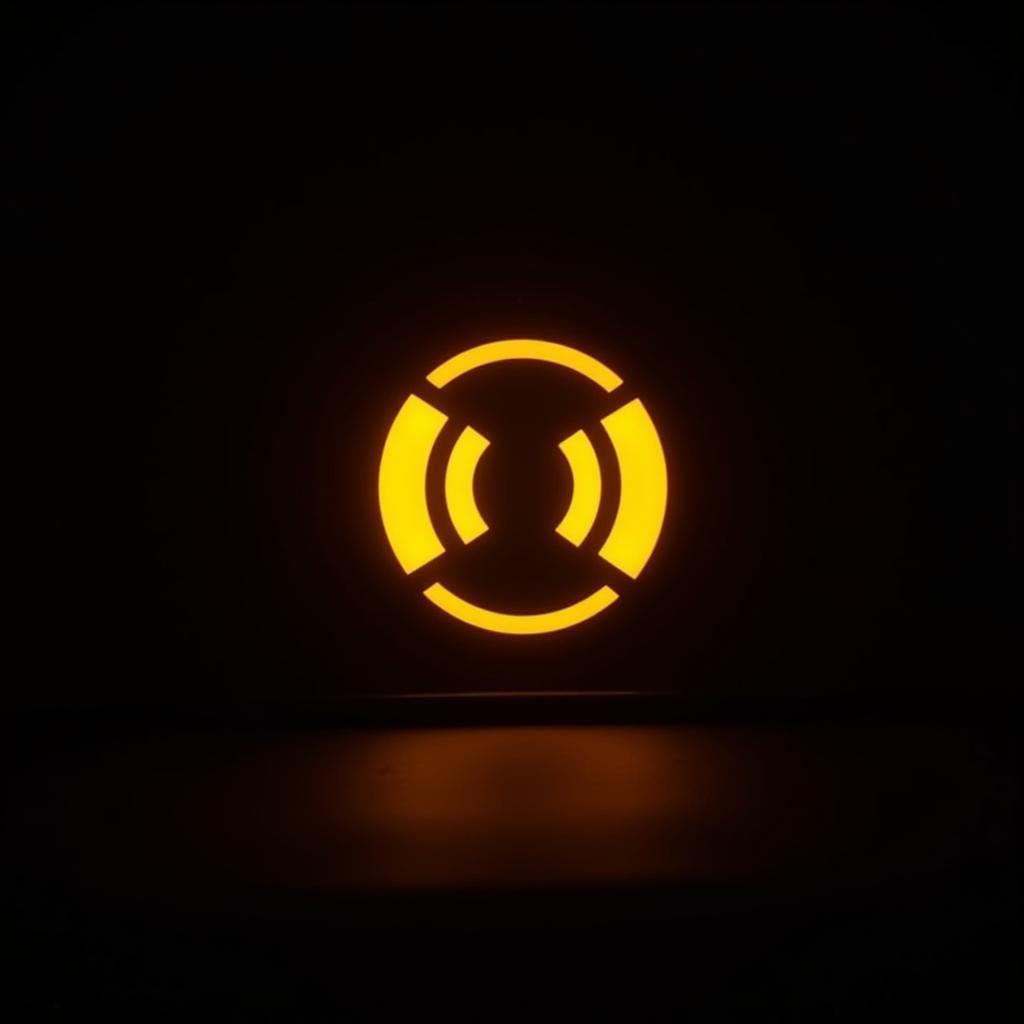The “DSC” and “Brake” warning lights illuminating on your BMW E46 dashboard can be a cause for concern, indicating a potential issue with your car’s electronic stability control (DSC) system or braking system. While it may seem daunting, understanding the possible causes and the troubleshooting process can help you address the problem effectively.
What Does the DSC & Brake Warning Light Mean?
The DSC warning light, typically accompanied by a yellow triangle with an exclamation mark, indicates a malfunction in the DSC system. The brake warning light, often depicted as a red circle with an exclamation mark, signals a problem with the braking system. These lights could be triggered by a variety of issues, ranging from minor sensor glitches to more serious mechanical failures.
Common Causes of DSC & Brake Warning Light
Here are some common culprits behind the DSC and brake warning light combination in your BMW E46:
1. ABS Sensor Malfunction
The Anti-lock Braking System (ABS) sensors are crucial for the DSC system’s functionality. Damaged, dirty, or faulty ABS sensors can disrupt the system’s ability to detect wheel speed and control braking, triggering the warning lights.
2. Wheel Speed Sensor Issues
Wheel speed sensors, integral components of the ABS system, measure the speed of each wheel. Malfunctions in these sensors can affect the DSC system’s operation, leading to the warning lights illuminating.
3. Low Brake Fluid Level
A low brake fluid level can compromise braking performance and trigger the brake warning light. The DSC system relies on the correct brake fluid level to operate effectively, so a low level can also activate the DSC warning light.
4. Faulty Brake Light Switch
The brake light switch, responsible for activating the brake lights when you apply the brakes, can malfunction. A faulty brake light switch can disrupt the braking system’s communication with the DSC system, triggering the warning lights.
5. Brake System Hydraulic Problems
Issues with the brake system’s hydraulic components, such as the master cylinder, calipers, or brake lines, can cause a loss of brake pressure or fluid leakage, leading to the brake warning light and potentially affecting the DSC system.
6. Electrical Problems
Electrical issues within the DSC system or the braking system, such as faulty wiring or a blown fuse, can disrupt communication and trigger the warning lights.
Diagnosing the Problem
To effectively address the DSC and brake warning lights, proper diagnosis is essential. Here’s a step-by-step approach:
-
Check the Brake Fluid Level: Start by checking the brake fluid level in the reservoir. If it’s low, add brake fluid of the correct type and ensure there are no leaks.
-
Inspect for Visible Damage: Visually inspect the brake system for any signs of damage, wear, or leaks. Look for loose or broken brake lines, damaged calipers, or signs of fluid leakage.
-
Use a Diagnostic Scanner: Utilize a diagnostic scanner compatible with your BMW E46 to read fault codes stored in the vehicle’s computer. These codes can pinpoint the specific component or system causing the issue.
-
ABS Sensor Check: Inspect the ABS sensors on each wheel for dirt, damage, or loose connections. Use a multimeter to test the sensors’ resistance and ensure they are working properly.
-
Wheel Speed Sensor Test: Test the wheel speed sensors using a diagnostic tool or multimeter. Confirm that they are providing accurate readings.
-
Brake Light Switch Test: Verify the brake light switch’s operation by using a multimeter to check its continuity when the brake pedal is pressed.
-
Electrical System Inspection: Check the electrical system for any signs of damage, loose connections, or blown fuses that could be affecting the DSC system or the braking system.
Troubleshooting & Repairing the Issue
Once you’ve diagnosed the problem, you can proceed with the necessary repairs. Remember:
-
Safety First: If you’re not comfortable performing repairs yourself, it’s always best to consult a qualified mechanic.
-
Proper Parts: Always use genuine BMW parts or high-quality aftermarket components.
-
Proper Installation: Ensure components are correctly installed and tightened according to specifications.
Expert Insight:
“Diagnosing the DSC and brake warning lights on a BMW E46 can be challenging. It requires a methodical approach and a thorough understanding of the systems involved. A diagnostic scanner is an essential tool for identifying the root cause.” – Michael Smith, Master Mechanic
“Don’t ignore these warning lights. Addressing them promptly can prevent further damage and ensure your safety on the road.” – Sarah Jones, Automotive Technician
Frequently Asked Questions (FAQs)
Q: Can I drive with the DSC and brake warning lights on?
- A: It’s not recommended to drive with these warning lights illuminated, as they indicate a potential safety issue.
Q: What if I only see the DSC warning light?
- A: If only the DSC warning light is on, the issue might be isolated to the DSC system, such as a sensor malfunction or an electrical problem.
Q: How much does it cost to fix the DSC and brake warning lights?
- A: The repair cost can vary depending on the cause and complexity of the issue. It’s best to consult a mechanic for an accurate estimate.
Q: Can I reset the warning lights myself?
- A: While you can reset the warning lights using a diagnostic scanner, it’s essential to address the underlying issue. Resetting the lights without fixing the problem will only cause them to reappear.
Conclusion
The DSC and brake warning lights on your BMW E46 are serious indicators that require immediate attention. By understanding the potential causes, conducting proper diagnosis, and addressing the issue promptly, you can ensure the safety and reliability of your vehicle. Remember, always prioritize safety and seek professional help when necessary.



